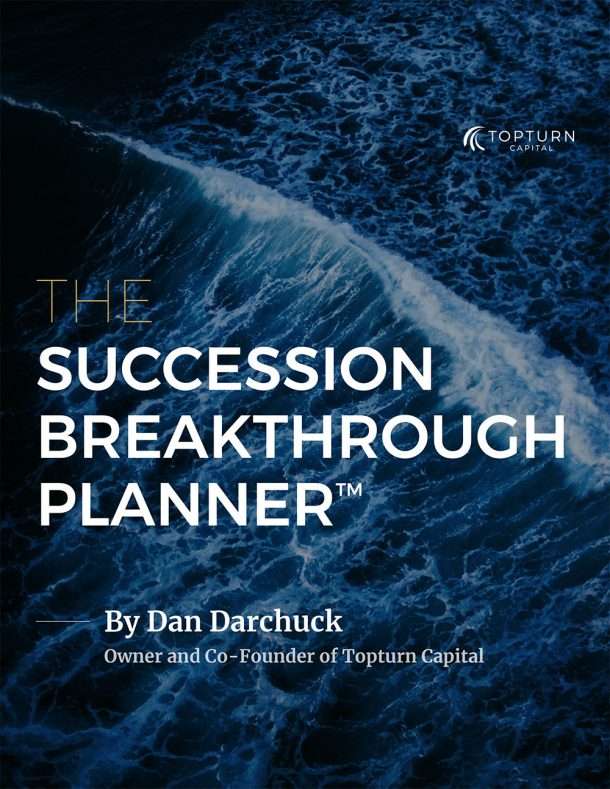Don’t ask me why, but I started tracking my bike rides using a fitness tracker app on my phone, one that has a social component to it. You track your workouts, and your friends can cheer you on (or taunt you if you’re falling behind).
I was excited about the feature that would allow me to record my time on specific segments of the ride, then compare my time against my friends who had completed the same ride.
I started by riding a specific segment repeatedly – one I knew I could use as a challenge against my peer group. I had been recording the segment—at first, without comparing against others—and my time was getting better and better. After one particular ride, when I knew I had crushed it, I ran a comparison.
I was last on the list.
I was shocked. How was that possible? I hang out with these guys, and there is no way I’m I in worse shape than all of them, and on that particular day, I’d ridden harder and faster than I had in a very long time.
I shared the experience with one of my friends who also has the app. He listened thoughtfully and said, “Hey, let me bring over one of my bikes. Try it for a while and see if it makes a difference.”
On the first day that I took my friend’s bike out, on the same segment of road, I vaulted up to second place!
What happened?
My friend recognized that I had been riding this segment of city streets on a mountain bike, with a larger, beefier frame, and bigger tires. He wisely loaned me a road bike—made for just the one type of riding. It’s no good on the trails, but it’s perfect for the pavement.
No matter what kind of activity we’re engaging in, we will always run comparisons in order to determine how we’re performing. It doesn’t matter if it’s sports, fitness, academics, business, real estate, or investments. In order to identify whether we should be celebrating or going back to the drawing board, we need data. More importantly: we need the right data.
Most of us have had the experience of being at a dinner party where a tablemate extols the virtues of their portfolio, recounting double-digit returns and the sheer genius of their strategy. We are also constantly bombarded with the activity of the DJIA, the S&P500, or the NASDAQ. In both cases, we may be mentally checking our own performance against these numbers.
But are we working with the right information?
None of these potential benchmarks are going to tell us what we should be expecting out of a well-diversified, balanced portfolio. Our friend at the dinner party hasn’t given a summary of their asset allocation—they’re just throwing out numbers. The major indices are all reporting on a specific basket of U.S. stocks. Not one of these is taking into account bond markets, international markets, or alternative investments.
One may be like speeding ahead on a road bike, designed for the smooth paved road, but you need to be riding on your bike, specifically designed for where and how you ride.
Even when we’ve been responsible and completed our financial planning, coming up with a rate of return that tells us that if we just hit a specific return number each year, all of our financial goals will be met, and our dreams will come true…that’s not the benchmark we should be using to judge the performance of our portfolio. Why? Because in reality, we are unlikely to hit that specific target rate of return exactly every single year. There will be years when we earn more, and years when we earn less.
Some of our result will depend upon what kind of market we’re in. If we’d started investing in 2009, we’d have been experiencing an upward trend for most of the last nine years. But if we started investing today, should we expect to experience the same type of upward trend over a similar time period?
When we set our goals upon fixed targets like those we might review in our financial plans, we have to realize that these are intended to be averages over very long periods of time. It’s difficult to measure performance effectively from one year to the next if you’re trying to use this long term average as your benchmark. The fluctuations that a portfolio can experience throughout a 12 month period are far more pronounced than those covering a 10 year period.
Most of us, don’t have the patience to wait out a 10 year period to find out if we’ve performed well in the past. So what’s the best way to measure performance on a regular basis?
We should not compare our returns to our party attendee with their unknown investments and even less-known risk tolerance, nor should we measure against indices, which are not structured to be a portfolio at all, but rather intended to be a measure of the market no matter where it is going.
Instead, we want to start with our own risk tolerance.
If you know that a 10% drop in your portfolio is going to end up in the bottom of your gut, with the accompanying nausea—then it’s not a good idea to have your portfolio entirely invested in stocks. No amount of expertise, real or imagined, will be able to rescue you before a drop like that can occur. Remember Black Monday, when the market opened down 20%? There was no level of fancy footwork that would have avoided this in a 100% stock portfolio.
Many of us are incredibly tolerant of volatility in a market trending upward, but very few of us are comfortable in a volatile market churning downwards.
How you feel today may not be how you feel tomorrow – and that’s okay. What’s important is that you recognize your own comfort levels as they occur, and if they change, it’s vital that you are honest with your yourself, and your team about those changes.
Open an ongoing risk dialogue with your advisors, where you are free to tell them that you’re a little more comfortable with risk today, and ready to turn it up, or a little less comfortable, and you’re having trouble sleeping. Taking a continuous measure of your risk tolerance and communicating that to your advisor means that your portfolio will reflect your comfort at that time, and as it changes.
Once this relationship is established, the next step is to identify benchmarks that are at least somewhat representative of how you are investing, based on your tolerance.
If you have a diverse portfolio that contains bonds, commodities, US stocks, and international stocks, the S&P500 is not a reasonable comparison for you. You’ll need a benchmark that has similar kinds of holdings, in percentages similar to the ones that were designed with your risk tolerance in mind. By using the right tools you can align your performance measurement with the structure you’ve determined you need in your own portfolio. As you make changes in your portfolio, you’ll need to make changes in your benchmark, so that you know you’re comparing your performance against a reasonable measure.
Measurement must also be aligned with an appropriate time period. There are going to be periods when your portfolio will lag behind your benchmark, and other times when your portfolio will be ahead. If your benchmark is up 5% and you’re down 20%, then yes, you may indeed have a performance issue. But if your benchmark is up 5% and you’re up 4%, you may be hovering within a reasonable range.
There is always going to be some variation, but overall alignment is the key.
Once you’ve figured out what kind of bike you’re riding, measure your performance against riders on similar bikes, instead of riders on all bikes, or those riders over there, on tricycles or motorcycles. Having the right kind of design to move off of can make all your decisions a little more calculated, and a lot more intelligent.
Wishing you a very successful and prosperous 2019!
Greg Stewart, CIO


